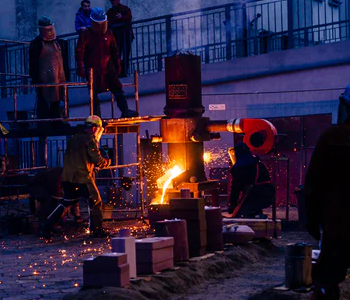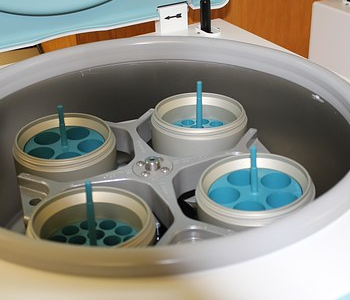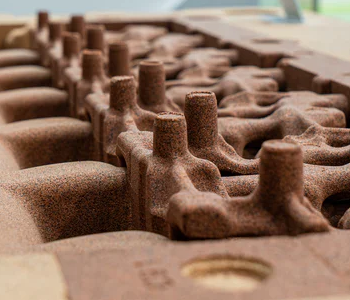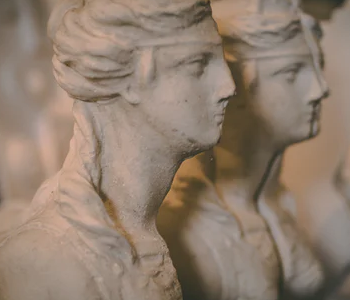A Comparison of the Different Casting Methods Used in Manufacturing
Casting is one of the oldest methods used in manufacturing. In fact, it’s downright ancient – historical artifacts have shown evidence of casting being practiced as early as 3200 BC. Casting may be a bit more sophisticated now, but it is still based on the same fundamental principles.
One factor that made casting so enduring as a manufacturing process is that it has been adapted in several ways. Nowadays, there are several different casting options that are ideal for changing scenarios. What are these different casting methods and when should they be used?
What is casting?
Casting is basically a method where the liquid material is poured into a mold. The material then takes the shape of the mold before it solidifies either through cooling or curing. Casting is ideal for the manufacturing of parts with complex geometries. The process also retains important material properties such as strength and rigidity.
Casting is the method of choice for high-volume reproduction of parts that require a high degree of reliability. For this reason, most of the metal parts used in cars and airplanes are produced via casting. The adaptability of casting to fully or semi-automated manufacturing processes has also proven to be one of its greatest advantages.
The common types of casting
Die casting

The most common type of casting method, die casting involves the introduction of molten metal into a mold under high pressure. Non-ferrous metals, such as copper, tin, or aluminum, are usually used in die casting. Alloys of these non-ferrous metals are also common. Casting of ferrous metals is less common but still possible.
Die casting can be done in either a hot chamber or a cold chamber. Hot-chamber die casting makes use of a pool of molten metal which is forced into the die using hydraulic or pneumatic forces. This method is considered more energy-efficient for metals or alloys with relatively lower melting temperatures.
In cold-chamber die casting, the metal is molten in a separate furnace and only a precise amount is transferred to the cold-chamber machine. This metal is then injected into the die using a hydraulic or pneumatic mechanism. Although cold-chamber die casting is slower, it is more efficient for metals with high melting temperatures. Some metals, such as aluminum and copper, are cast using cold-chamber methods to prevent the uptake of iron from the molten pool.
The hardened steel dies used in die casting require huge capital investment. However, these are meant to be used up to a million times. This massively reduces the cost of die manufacturing per piece of the finished product. For this reason, die casting is more practical for manufacturing processes that will yield high volumes of parts. It also has the advantage of a shorter turnaround time to satisfy more demanding orders.
Vacuum die casting
Also known as vacuum-assisted die casting, this variation to standard die casting applies a vacuum to the mold cavity before and during injection of the molten material. This helps remove moisture and gases from the metal, thus reducing porosity and improving the strength of the finished part.
The vacuum also facilitates the flow of molten metal into small recesses in the mold. This makes it possible to create thin-walled pieces that benefit from the high-strength characteristics of die casting.
In terms of quality, vacuum die casting has an almost across-the-board advantage over standard or high-pressure die casting. However, it also requires a more complicated die casting setup.
Investment casting

The investment casting process starts by creating a master pattern out of wax. This is basically a prototype on which all succeeding parts will be based on. It is also possible to create a sprue composed of several copies of the master pattern. The use of wax for the master pattern is the reason why investment casting is alternatively known as lost wax casting.
Once the master pattern has been made, it will be time to apply investment materials to it. This is done by coating the master pattern in refractory materials such as silica, aluminum, or zircon. Investment typically starts by submerging the master pattern in a solution of the refractory material, after which larger volumes are applied either by hand or spray.
The investment material has to be at least 5 millimeters thick before it is left to dry for at least 48 hours. Drainage of some sort also needs to be integrated into the design of the mold.
Once the investment material has solidified, the mold is exposed to temperatures hot enough to melt the wax master pattern. The wax drains out of the mold, leaving behind an empty inner chamber. Any residual wax is burned out by exposing the mold to temperatures exceeding 800 °C.
With the mold completed, molten metal can be poured into the internal cavity and allowed to harden. If you started with a sprue, a single mold can be used to create multiple copies of the master pattern. Once the metal has hardened, the mold is broken apart to retrieve the final product.
Compared to die casting, investment casting is a much slower process. It also fares poorly in automated settings simply because it requires a lot of human intervention. The mere fact that the mold needs to be discarded after one use makes this method less than ideal for high-volume production.
The advantage of investment casting is that it’s very cheap. A wax master pattern and the refractory materials used to make the mold cost almost nothing compared to the hardened steel dies that most other casting methods need. Investment casting also excels in reproducing designs with very intricate details.
Centrifugal casting

Centrifugal casting, as the name implies, relies on centrifugal forces to help achieve the desired dimensions. This means that the cast has to be rapidly rotating to generate these centrifugal forces. This also indicates that centrifugal casting is the preferred method for parts that are symmetric to an axis of rotation such as tubes and pipes.
The centrifugal casting method makes use of a cylindrical mold typically made of hardened steel. This mold rotates at a rate between 300 to 3000 rpm, at which point molten metal is injected into its inner cavity. The centrifugal forces push the molten metal towards the walls of the mold, creating a highly compact tube with uniform dimensions.
There are several advantages to this unique approach. Sustained application of centrifugal forces promotes the separation of components in the metal due to differences in density. This allows for the easy removal of impurities that can compromise the mechanical integrity of the final product. The centrifugal forces also promote grain alignment in the metal as it cools.
Although centrifugal casting is constrained to pieces that have cylindrical shapes, it is quite versatile within this sub-field. A single centrifugal mold can be used to manufacture pipes and tubes with varying dimensions simply by changing the volume of material that goes into the mold. A long cast can also be used to create multiple shorter pieces.
Centrifugal casting may seem like a ‘niche’ casting method but it’s actually one of the most widely used. After all, thin-walled cylinders are used practically everywhere. From the piston rings of cars to the hubs of airplane propellers, centrifugal casting is considered the go-to casting technology for high-reliability cylindrical parts.
Sand casting

Sand casting is possibly the oldest type of casting. This mainly because the molds used in sand casting are only made of hardened or compacted sand. Cost-effective and easy to do, sand casting is an option for settings that aren’t quite industrial in terms of sophistication.
The sand casting process starts with a master pattern that can be made with wood, plaster, plastic, or metal. Hobbyists have also integrated the sand casting method with 3D printing. It is standard practice to design the master pattern to be oversized to provide an allowance for shrinkage when the metal cools.
The sand mold can then be created from the master pattern. This mold is typically done in two parts by burying each half of the pattern separately. Sand is packed into a container with half of the pattern buried. The sand has to be very compact, whether packing is done by hand or by a machine.
Once the sand has been packed, the pattern can be removed. At this point, channels need to be integrated into the mold to allow for air evacuation when the metal is poured in. There also needs to be a funnel to facilitate the pouring of the molten metal.
With both halves of the sand mold prepared, they can be clamped together. All gates and channels need to be perfectly aligned at this point. Molten metal can then be poured into the funnel of the mold. It will take the shape of the internal cavity and harden by cooling.
The low cost of sand casting is one of its biggest advantages. This goes both for the materials needed for casting as well as any required equipment. A highly adaptable method, sand casting can be done for practically any size or shape of a part. It can also be used for almost any type of metal or alloy.
In terms of quality, sand casting compares poorly to the more sophisticated methods like die casting and investment casting. Since sand acts as a refractory material, finished pieces tend to come out with rough surfaces. It is also not possible to apply heavy pressure during sand casting. This means that sand-casted parts tend to have high porosity and low strength.
Plaster casting

Plaster casting is similar to sand casting in that it’s a method that can be done at home or in a small workshop. The material used to make the cast here is plaster, or a mixture of gypsum, water, and some strengthening compounds. Other additives can also be introduced to make the plaster less prone to cracking and easier to set. Contrary to initial impressions, the plaster used in plaster casting is NOT just plaster of Paris.
The plaster casting process also starts with a master pattern that can be made of wood, metal, or plastic. It has to be treated with a layer of anti-adhesive compound to facilitate separation from the plaster. The mold will be done in two parts, so a parting line will have to be decided early on.
Just like sand casting, the master pattern is placed in a container on which the plaster solution is poured. Under normal circumstances, the plaster should set in less than 30 minutes. Once both halves of the mold have been set, the plaster is baked to remove excess moisture. Some finishing processes, such as cleaning and heat treating, may be necessary. Channels and funnels can be integrated into the mold at this stage.
The two halves of the mold are clamped together before molten metal is poured in. This metal solidifies via cooling. Plaster casting is best used with non-ferrous metals to avoid the reaction of iron with sulfur in the plaster. Plaster molds are not strong and typically break apart after one use.
Like sand casting, plaster casting is a fundamentally simple and inexpensive casting method. Plaster casts can be used to create exceptionally smooth finished products. In its liquid form, plaster has very low viscosity allowing it to get into small spaces and take the shape of precise details.
In terms of durability, plaster ranks below sand. A plaster cast typically cracks or breaks apart after just a single-use. It also cannot handle extreme temperatures, making it suitable only for metals with low melting temperatures.
Continuous casting
Also known as strand casting, the objective of this method is to allow for casting that is continuous rather than by batch. Its product is an interrupted length of solid metal that can then be cut into shorter segments.
The equipment for continuous casting is highly specialized but not exactly complicated. Molten metal is injected into a mold which can have an indeterminate length. The material moves along the mold as more of it is injected, effectively cooling and solidifying as it travels downward. This long strand of metal is then retrieved and cut into pieces at the end of the mold.
Continuous casting is very efficient. In contrast to the other casting methods, the process does not need to stop and restart for every new piece that gets made. It also reduces inconsistencies in the final products since all parts go through the exact same process. This can vastly reduce the cost per piece of the finished part.
As you would expect, continuous casting is only suitable for parts that have long and continuous shapes. The equipment for continuous casting is also highly specialized – making changes to the process will likely require a massive overhaul of the entire setup.
Final thoughts
Casting remains one of the most important manufacturing methods. With more casting techniques, it’s now possible to do small-scale casting projects using equipment you can use at home or in a garage workshop. At the industrial scale, the value of casting is undeniable – you almost certainly have a lot of things around your right now that were made via casting.
What we have listed here are some of the most common casting methods but there’s probably about a handful of less common ones. All of them have unique benefits that make them ideal for specific scenarios.

